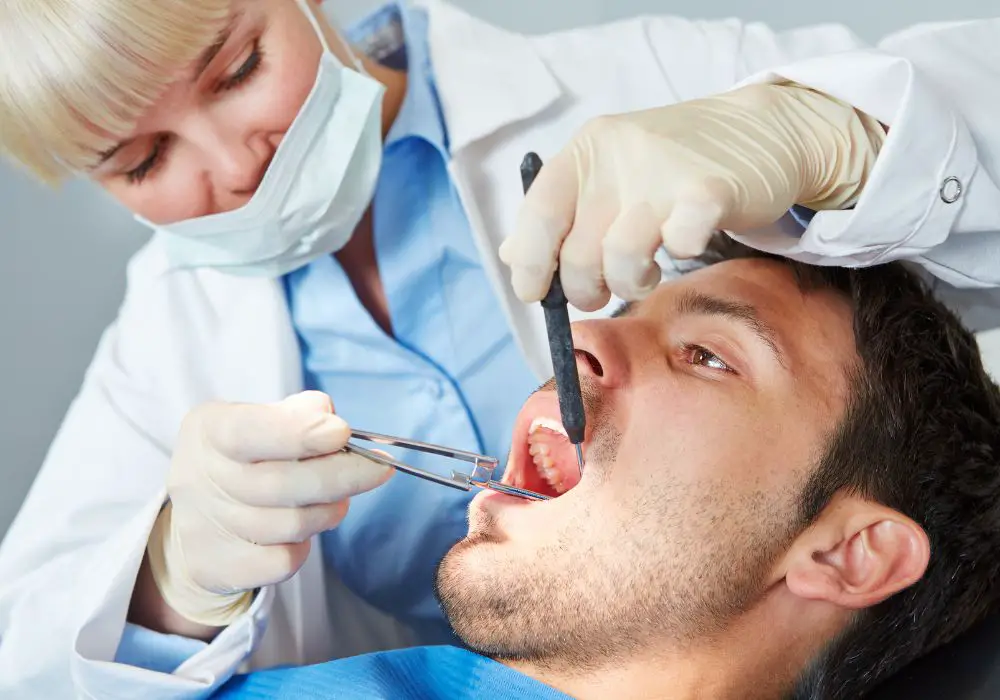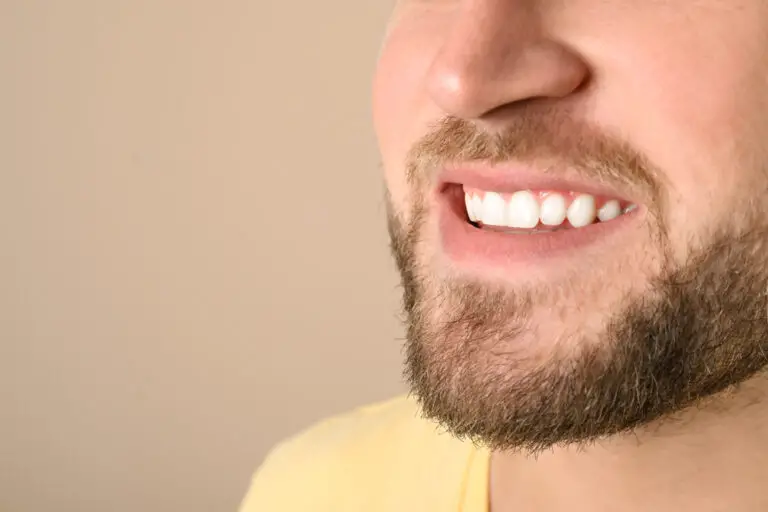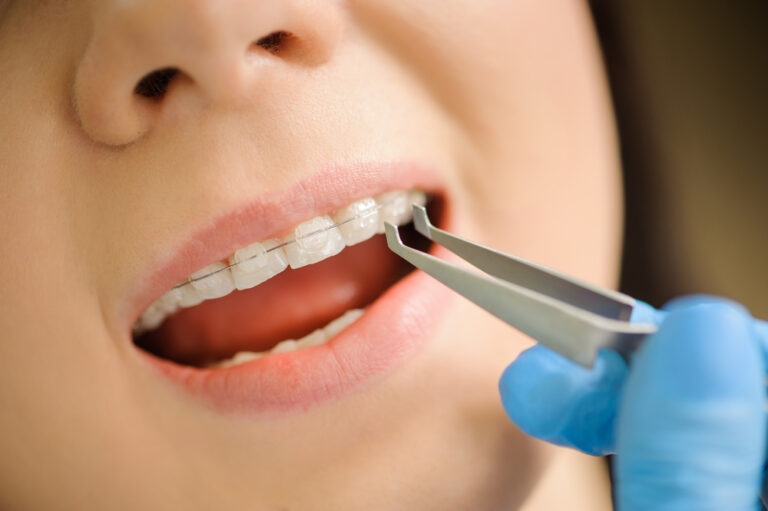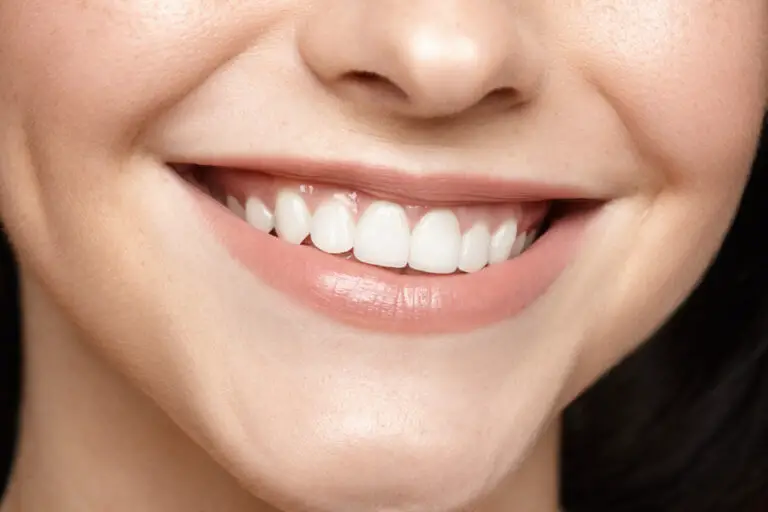Tooth decay, also known as dental caries or cavities, is one of the most common chronic diseases worldwide. It occurs when foods containing carbohydrates (sugars and starches) are left on the teeth. Bacteria in the mouth digest these foods, producing acids as a byproduct. These acids can dissolve the mineral content of teeth – the enamel and dentin – resulting in holes or lesions in the teeth. If left untreated, tooth decay can lead to infection, pain, and tooth loss.
The good news is that early stage tooth decay can often be stopped and reversed. But what about more advanced decay that has led to cavitations in the tooth structure? Can decaying teeth with holes be restored to health? Let’s take a deeper look at how dentists assess decayed teeth, the latest technologies and techniques used to repair them, and how restored teeth can be maintained for the long-term.
Assessing the Damage
When confronted with a decaying tooth, the dentist will start by thoroughly assessing the extent of the damage utilizing visual exams, x-rays, advanced diagnostic tools and often a dental probe.
Visual Examination
The dentist carefully looks at the tooth from all angles under bright lighting, searching for any cracks, discoloration or visible holes that indicate decay. They examine for signs of trauma or infection around the gums. Magnifying loupes may be worn to inspect the tooth surface in detail.
Dental Probing
A thin metal dental probe is used to check for soft areas of enamel or dentin that have been weakened by decay. This helps locate cavities that may lie beneath the surface not visible to the eye. The patient may feel pressure during probing but it should not be painful.
X-rays
Dental x-rays like bitewings or a panoramic allow the dentist to see in-between and inside teeth right down to the roots and jawbone. X-rays help identify cavities between teeth or under old fillings. They show how deep and far decay has spread into the tooth structure and roots.
Transillumination
A fiberoptic light source can be used to shine light through the tooth. Decayed areas will show up darker where the light does not pass through. Early small cavities near the biting surface can be detected with this method.
Diagnostic Camera
New intraoral cameras take highly detailed digital images of the tooth surface. Software analyzes these images for very subtle changes in enamel health and can detect tiny areas of early demineralization before cavities form.
Laser Fluorescence
This advanced system uses laser light aimed at the tooth which causes decayed areas to give off a different fluorescent glow. The DIAGNOdent device precisely identifies and measures decay at a very early stage.
Evaluating the Extent of Decay
Once all diagnostic information has been gathered, the dentist will thoroughly evaluate the extent, depth, and stage of the decay to develop the appropriate treatment plan.
- Extent – How much of the tooth structure is involved? Is it isolated or widespread? Which surfaces are affected?
- Depth – Has decay penetrated the enamel fully and entered the deeper dentin layer? How close to the pulp is it?
- Stage – Is it early, moderate or advanced decay? The level of progression helps determine which restoration methods are indicated.
Understanding the specific decay situation allows the dentist to recommend the ideal restoration options to rebuild, repair, and re-enforce the damaged tooth properly.
Treating Decay and Restoring Weakened Tooth Structure

Based on the analysis of the decay, the dentist has various high-tech methods and advanced materials to restore even significantly damaged teeth.
Treating any Infection
If the pulp has become infected, a root canal will be performed first to clear out bacteria and diseased tissue before restoration. If needed, antibiotics may be prescribed to help clear any nearby abscesses.
Removing Decay
All decayed material is thoroughly drilled out using precise air abrasion tools or lasers rather than traditional noisy drills. Any required numbing helps keep the process comfortable.
Tooth-Colored Resin Fillings
Small to mid-size cavities can often be restored with bonded tooth-colored resin fillings that are seamlessly matched to the natural tooth shade. Multiple layers of resin create a very durable, fracture-resistant filling.
Inlays and Onlays
For larger areas of decay, custom-made tooth-colored inlay or onlay restorations may be used. The dentist takes an impression of the prepared tooth which is sent to a dental laboratory to create an inlay or onlay fabricated to precisely fit the space. Once cemented in place, they look and function like natural tooth structure.
Dental Crowns
When too much of the original tooth cannot be salvaged, crowns may be required. Digital impressions are taken and used to design and mill a custom crown out of strong ceramic, porcelain-fused-to-metal, or gold material that covers the entire tooth. Temporaries can be placed same-day while the permanent crown is being made. Crowns restore severely decayed teeth to full function and aesthetics.
Root Canal Treatment
If decay has infected the pulp and roots, a root canal will be done to fully clean out the canals and seal them. A temporary filling may allow time for the tooth and bone to heal before the permanent crown is placed over it.
Tooth Extractions
Hopefully avoidable, but when a tooth cannot be saved due to extreme decay, periodontal disease, etc, the dentist may advise extraction and replacement with a bridge, partial denture, or implant. This allows healthy new implant-supported crowns to be placed.
Dental Implants and Implant Crowns
For missing or un-restorable teeth, the leading solution today is a dental implant with a life-like implant crown attached. An artificial titanium tooth root fuses with the jawbone. After integration, it can hold a realistic porcelain crown for optimal function and aesthetics. Implants require a healthy jawbone and adequate space.
Bridges
If multiple adjacent teeth require removal, a fixed dental bridge anchored to the neighboring teeth may be an option. The anchoring crowns are cemented over healthy teeth on each end. One or more false teeth are fused in-between these end crowns to seamlessly replace the missing teeth.
Restoring the Tooth – Step by Step

While techniques vary case-by-case, here is a general overview of the tooth restoration process for severely damaged teeth:
Initial Exam and Assessment
The dentist will perform a thorough clinical exam, take x-rays from all angles, use diagnostics tools, create treatment simulations, and develop a treatment plan.
Anesthesia
Local anesthesia will be administered to completely numb the area before the procedure. Sedation like nitrous oxide may also be offered to maximize comfort.
Isolation and Protection
A rubber dam may be placed to isolate and protect the tooth. Handpieces also have suction to capture debris.
Removing Decay
All diseased enamel and dentin are precisely drilled away using micro-thin drills under magnification until only healthy tooth structure remains. Any infected pulp is removed.
Restorative Material Preparation
The restoration – whether a filling, inlay, onlay or crown – will be designed and created based on the specific situation. Digital dentistry streamlines the process.
Bonding and Placement
Composite resin fillings are applied in layers and shaped for a seamless fit using curing light. Other restorations are properly fitted and luted in place using strong bonding agents.
Contours and Occlusion
Bite and contacts are verified using articulating paper. The restoration is meticulously contoured and adjusted.
Finishing and Polishing
Finally, all roughness is smoothed away and a high-gloss polish is applied for a natural luster.
Follow-up Appointments
Further monitoring, adjustments, and dental hygiene visits will be scheduled. The patient is given home care instructions.
Maintaining the Restored Tooth
To achieve the longest lasting results from restored teeth, excellent at-home oral hygiene must be practiced along with professional dental cleanings and checkups.
Strict Oral Hygiene
- Brush using proper technique – 2 minutes, twice a day
- Floss thoroughly once daily
- Use recommended antiseptic mouthwashes
- Clean between teeth after meals as needed
Professional Cleanings
Have the teeth professionally cleaned, polished, and inspected by the hygienist every 6 months. More frequent 3 or 4 month cleanings may be advised for those at high risk for oral disease.
Diet Modification
- Reduce frequency of snacking between meals
- Avoid excessive sugary and starchy foods and beverages
- Limit acidic foods and drinks which can erode enamel
- Hydrate with fluoridated water instead of sugary or acidic drinks
Saliva Production
- Chew xylitol gum to increase saliva flow
- Use a saliva substitute if needed
Fluoride Applications
- Use a fluoride toothpaste recommended for your needs
- Consider prescription strength fluoride toothpaste or gel
- Get periodic fluoride varnish or gel treatments at the dental office
- Use daily fluoride oral rinses
Protective Options
- Have sealants placed on susceptible teeth
- Wear a custom nightguard if nighttime grinding is occurring
- Get fitted for an occlusal splint if advised
Habit Changes
- Stop any tobacco use
- Avoid chewing on hard items like ice or pens
- Replace toothbrush every 3 months or after illness
- Break habits like nail biting, teeth clenching, etc.
Restoring Decayed Teeth: The Long Term Outlook

What is the long-term prognosis for decayed teeth after being restored? Here are some general timelines:
- Resin composite fillings: 5-15 years before possible replacement needed.
- Dental crowns: Estimated lifespan of 15-30 years.
- Root canal treatments: Over 85% success rate long-term if the tooth is crowned.
- Dental implants: Over 95% successfully osseointegrate and can last decades.
- Bridges: Lifespan of approximately 10-15 years with proper care.
While individual factors affect longevity, restored teeth can certainly function normally for many years if properly cared for. However, teeth that have suffered decay are more susceptible to future decay. Excellent lifelong oral hygiene and dental care are key to making restorations last.
FAQs About Restoring Severely Decayed Teeth
Here are answers to some frequently asked questions:
Can a cavity be reversed or healed without fillings?
Early decay may be arrested with fluoride. But once a cavity develops, it will not heal on its own. The decay must be removed and the tooth properly restored.
Do dental crowns always require root canals?
No, it depends on the health of the tooth pulp. If the pulp is still vital and not infected, a root canal may not be needed before placing a crown.
Can dental implants get cavities?
The titanium implant itself cannot decay. But the visible crown portion can still get decay around the gumline or between neighboring teeth if oral hygiene is poor.
Is a front tooth with decay best treated with a crown or veneer?
It depends on the severity and location of decay. Small cavities may be restored with bonded fillings. More extensive decay often requires a crown while veneers are used to improve esthetics in healthy teeth.
Can a bridge be placed without removing teeth?
Yes, bridges can be bonded over healthy neighboring teeth without extracting the missing teeth in between. However, adapting around the partial tooth roots may be difficult.
Summary
Severe tooth decay does not have to mean tooth loss is inevitable. Cutting-edge dental techniques make restoring even significantly damaged and decayed teeth very attainable. Early intervention is key, but even teeth with advanced destruction, infections, root involvement or missing segments can often be salvaged through procedures like root canals, crowns, fillings, inlays, bridges, and implants. They may not be quite as durable as fully healthy natural teeth, but restored teeth can still provide many years of normal function, aesthetics, and boost to oral health if properly cared for.
Regular dental exams and prompt treatment of any decay at the first sign allow for more conservative options. But even those with extensive long-term decay issues now have hope of reversing the damage, avoiding extractions, and restoring their teeth for the long haul. With dedication to ongoing prevention and dental care, your restorations can be maintained and your smile can shine beautifully for life.






